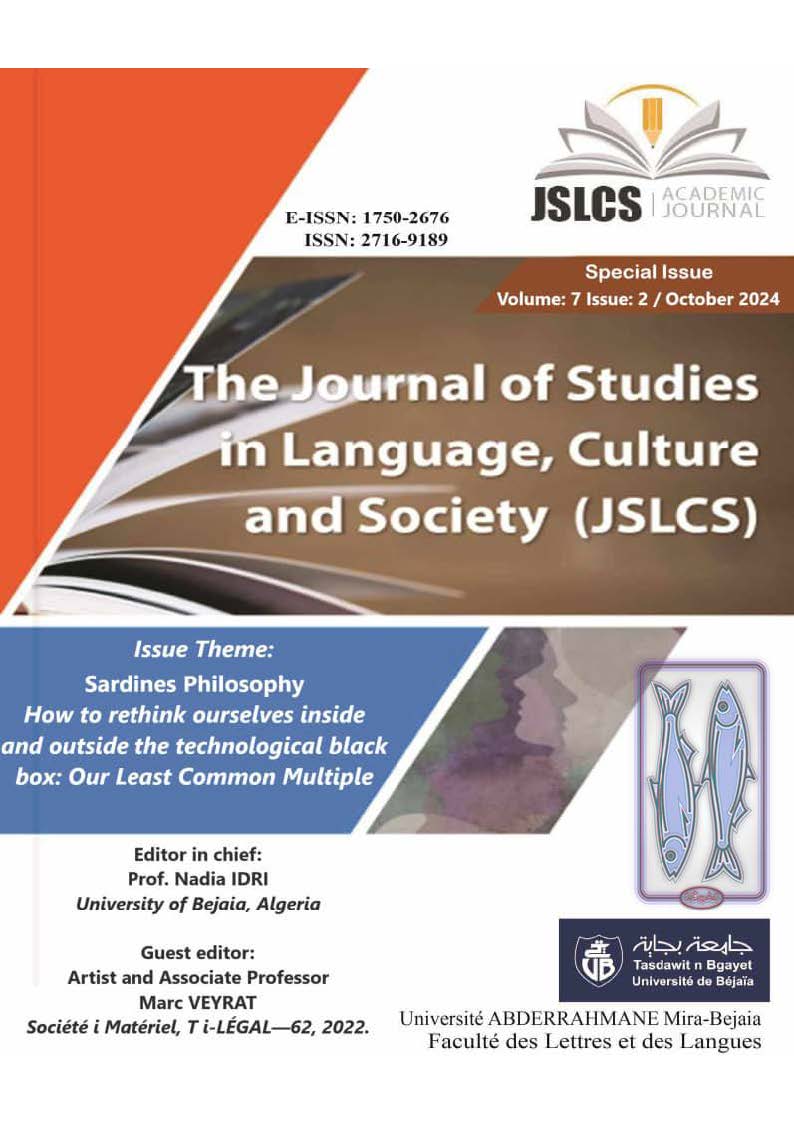Phenomenal Approach to Transpassibility in Relation to AI
Keywords:
Artificial intelligence, generative artificial imagination, phenomenology, transvergence, transpassibilityAbstract
From the analysis of lines of facts understood methodologically in a Bergsonian sense, this article shows how generation by AI detaches itself from the logic of mimetic convergence and divergence, to correspond more to transvergence. Mimetic convergence is what reduces creation by AI to being held in a rational empirical correlationism. This horizon of generation is what dominates the vast majority of AI models (SORA, Runaway). Divergence is due to the intentional form of our imagination, leading creation by AI to correspond to a form of surrealism. Despite the search for divergence, it is still human consciousness that determines the imaginary variations of what is perceived. Transvergence would then be the possibility, for human consciousness, to observe a form of algorithmic generation, which would be detached from its point of view. This is why, once the process of transvergence has been highlighted, we will see how it requires a form of transpassibility on the part of human consciousness to be explored. Transpassibility will be studied as a form of affective disposition essential to welcoming that which no longer meets the conditions of consciousness. This concept of transassibility comes from Maldiney's phenomenological research. It is only if we abandon the pretension of grasping what belongs based on our conditions that we can see the conditions of a generative artificial imagination emerging for consciousness that requires us to reflect on its own categories.
References
Alquié, F., (1955) Philosophie du Surréalisme, Flammarion.
Bergson, H., (1922) La conscience et la vie, In L’énergie spirituelle, PUF.
Boisnard, P., (2024), Figure de l’infigurabilité de l’espace latent, Turbulences Video
n°124, pp.82-87.
Boisnard, P., (2024), The latent space of off-screen, http://databaz.org/xtrm-art/?p=951
Boutet Monvel, V. (2023). Cybernetic subjectivities on a loop: From video feedback to
generative AI, December 11, 2023. https://necsus-ejms.org/cyberneticsubjectivities-
on-a-loop-from-video-feedback-to-generative-ai/.
Chatelet, C., Figuration et configuration de quelques espaces insomniaques, Turbulences
Videos n°120
Chatonsky, G. (2022). Les deux imaginations artificielles : logique et esthétique!.
http://chatonsky.net/double_ima/
Dewey, J., (2006) Logique : la théorie de l’enquête (traduit par G. Deledalle), PUF.
Husserl, E. , (1928), Max Niemeyer.
Lévinas, E. (1961). Totalité et infini. Martinus Nijhoff.
Malabou, C. (2017). Métamorphoses de l’intelligence, que faire de nos cerveaux bleus?,
PUF.
Malabou, C., Kyrou, A., (2020) Questionner « l’intelligence » des machines, Multitudes
/1 ((n°78)), pp. 134 à 141, Éditions Association Multitudes.
Maldiney, H. (1991). Penser l’homme et la folie, (À la lumière de l’analyse existentielle
et de l’analyse du destin). Jérôme Millon.
Vayre, J.S., Gaglio, G., (2020) L’intelligence artificielle n’existe-t-elle vraiment pas ?
Quelques éléments de clarification autour d’une science controversée. Diogène
n°269-270, PUF.
Downloads
Published
How to Cite
Issue
Section
License
Copyright (c) 2024 Philippe Boisnard

This work is licensed under a Creative Commons Attribution 4.0 International License.







